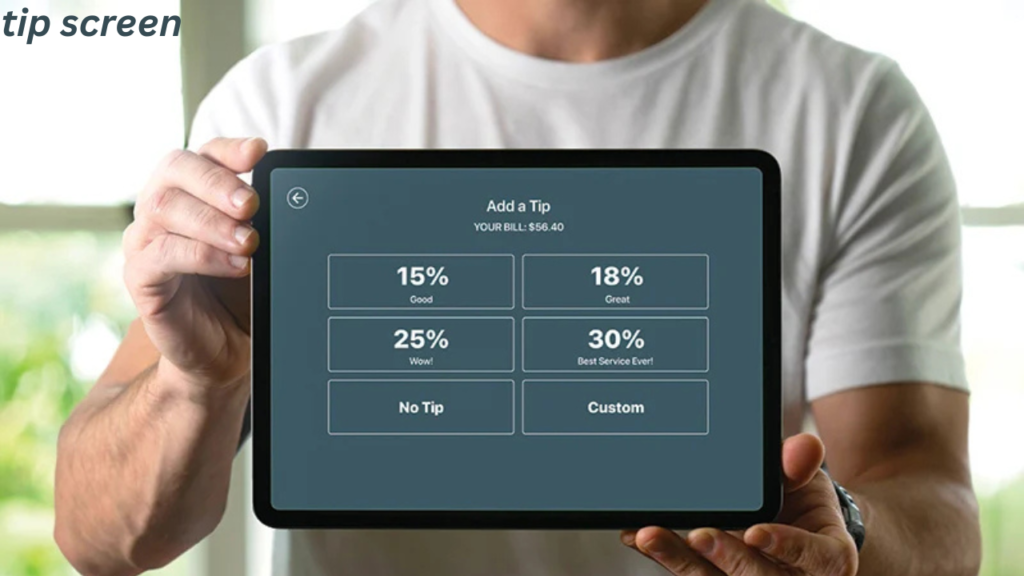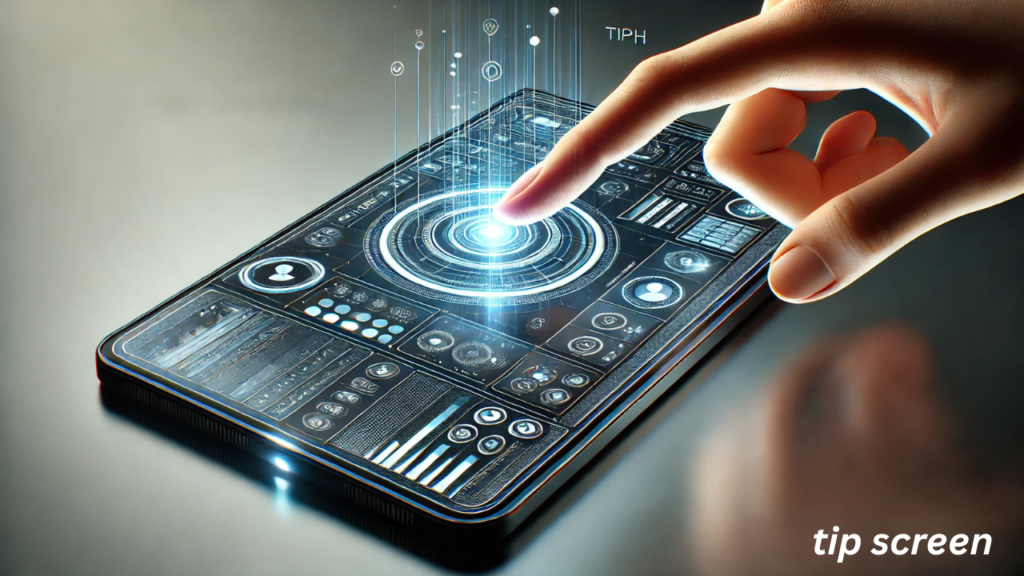
tip screen
In today’s technology-driven world, touchscreens have become the standard interface for most electronic devices. From smartphones and tablets to laptops and industrial machines, the touch interface is central to how we interact with modern technology. One particularly innovative and vital element of this interaction is the “tip screen.” While often overlooked, tip screen are crucial in enhancing the user experience and ensuring that devices are functional and efficient. This article will explore why tip screens are essential for efficient device interaction and how they revolutionize users’ engagement with their devices.
What Are Tip Screens?
Before diving into why tip screen are essential, it is crucial to define what they are. A “tip screen” typically refers to the sensitive portion of a touchscreen that responds to touch or input and is specifically designed to register actions with precision and accuracy. While the term “tip screen” isn’t always used in the mainstream, it can be understood as the area on a device’s screen that allows for detecting user touch, often requiring light or precise touches to register commands. It’s important to distinguish this from larger touch-sensitive areas, like on larger tablets or displays, where input might be more generalized.
The “tip” in tip screen refers to the very end or sensitive part of the screen, such as the areas near the edges or, sometimes, specific pressure-sensitive sections. This section enhances the user’s ability to make precise selections and gestures, creating an environment where users can interact more effectively and with excellent responsiveness.
The Rise of Touch Interaction

The rise of touch interaction began in the early 2000s, with devices like smartphones, tablets, and touch laptops becoming more popular. These devices came equipped with touchscreens that could interpret various forms of touch input, such as taps, swipes, and pinches. The precision required for these touch-based inputs led to the development of more sensitive screens, particularly those designed for mobile devices.
The evolution of these touchscreens also led to the creation of more responsive tip screens, where a user’s touch would be more accurately interpreted. Today, tip screens are found in various applications, ranging from simple consumer electronics to complex industrial machines, making them a cornerstone of modern device interaction.
Key Benefits of Tip Screens for Efficient Device Interaction
- Enhanced Precision and Accuracy Tip screens are designed to respond to subtle touches, essential for activities requiring precision, such as selecting small icons, tapping hyperlinks, or performing other detailed tasks. For instance, in digital art apps, tip screens allow users to make fine adjustments to their work, making the experience far more satisfying. Tip screens significantly boost efficiency by ensuring that users can perform delicate actions without interference from mis-taps.
- Faster Response Time Devices with tip screens are known for quicker response times. Because these screens are designed to recognize the specific area of the touch (often with pressure sensitivity), the commands are executed faster, resulting in a seamless experience. This responsiveness is key in Gaming or virtual reality industries, where rapid, real-time interactions are vital.
- Reduction in Input Errors One of the most significant advantages of tip screens is their ability to reduce errors in user input. With touchscreens optimized for OK input, users are less likely to tap the wrong button or area accidentally. The precision of the tip screen, especially on mobile devices, ensures that even slight touches are recognized accurately, decreasing the likelihood of mistakes that could frustrate the user or impede progress.
- Customizable Interaction Tip screens offer the possibility for customizable settings, allowing devices to tailor the sensitivity and functionality of their touchscreens. For example, a user could adjust the screen’s sensitivity to respond more precisely to a light touch or a firmer press. This customisation level provides users the flexibility to configure their devices based on their specific needs, whether for accessibility reasons or personal preference.
- Improved Multitasking Devices with tip screens allow for more efficient multitasking. The finer control that comes with tip screens makes it easier for users to switch between apps or manage multiple functions at once without losing precision. This is particularly useful in professional environments where time and accuracy are of the essence, such as in medical equipment or engineering tools.
- Better Integration with Stylus or Pen Inputs Tip screens also perform exceptionally well with stylus or pen inputs. This is important for graphic designers, artists, architects, and other professionals who rely on pen-based interfaces to create designs or perform precise measurements. Tip screens detect the pressure applied to the screen and allow for more natural and fluid interaction, enhancing the user experience in creative and technical fields.
- Durability and Long-Lasting Performance Modern tip screens are designed to be highly durable, with protective layers that prevent scratches, smudges, and other forms of wear and tear. This ensures that the device remains responsive and functional for longer, even with frequent usage. The longevity of tip screens reduces the need for frequent repairs or replacements, contributing to overall cost-effectiveness for both consumers and businesses.
How Tip Screens Contribute to Different Industries
- Mobile and Consumer Electronics In smartphones, tablets, and other handheld devices, the accuracy and speed of tip screens make them indispensable. Users can enjoy a more intuitive and efficient experience when interacting with their devices, whether browsing the internet, Gaming, or interacting with apps. Tip screens are especially critical for mobile Gaming, where a rapid, precise response can mean the difference between success and failure.
- Healthcare and Medical Devices In the healthcare sector, tip screens have revolutionized how medical professionals interact with diagnostic tools and patient care systems. These devices often require precise and rapid responses, and the accuracy of tip screens ensures that healthcare providers can make the right decisions quickly. For example, in surgeries or diagnostic imaging, tip screens offer an efficient way for doctors to interact with equipment without needing physical buttons that could cause contamination.
- Industrial Applications Many industrial machines use tip screens to streamline operations. The precision of tip screens allows operators to control machinery more effectively, especially in environments where safety and accuracy are critical. In settings like assembly lines or factory floors, making quick, accurate adjustments can prevent errors and downtime, improving overall productivity.
- Entertainment and Gaming In entertainment devices like gaming consoles or interactive displays, tip screens provide users with a more immersive experience. The acceptable level of control available through these screens allows gamers to interact with their games more meaningfully, contributing to a more satisfying gaming experience. The precision required in Gaming—whether through quick actions or complex manoeuvres—makes tip screens an essential component of modern gaming technology.
- Education and Learning Tools Tip screens are also gaining traction in education, especially with interactive learning tools like smartboards and tablets. Teachers and students benefit from the precision and ease of use that tip screens provide, whether for writing, drawing, or navigating educational materials. The accuracy of the screen ensures that lessons and activities can be carried out smoothly and efficiently, enhancing the learning process.
Conclusion
Tip screens have become essential to modern device interaction due to their precision, responsiveness, and ability to enhance user experiences. From mobile phones and laptops to industrial and medical devices, these screens ensure users can interact efficiently with their technology. Tip screens will become even more advanced as technology evolves, providing greater customization, improved functionality, and seamless user experiences. The role of tip screens in improving accuracy, reducing errors, and allowing for faster, more precise interactions makes them indispensable in today’s digital landscape.
FAQs
What is the difference between tip and regular touch screens?
A tip screen is a specialized touchscreen that detects more subtle or precise touches. It is sensitive to smaller input areas and often works more accurately, making it ideal for tasks requiring fine control, such as drawing or detailed navigation.
How do tip screens improve user efficiency?
Tip screens enhance user efficiency by offering faster response times, reducing input errors, and allowing for more precise actions. This makes typing, drawing, or selecting small buttons more straightforward and accurate.
Can tip screens be customized?
Many tip screens allow users to adjust the sensitivity, making them customizable for different applications. This customization benefits people with accessibility needs or who prefer a specific touch sensitivity.
Are tip screens durable?
Modern tip screens are designed to be durable and resistant to scratches, smudges, and other forms of wear and tear. This ensures they perform well over long periods, even with frequent use.
Are tip screens functional in Gaming?
Absolutely! Tip screens provide the precision and quick response times necessary for competitive Gaming, where every touch and movement counts. Their accuracy improves the gaming experience by allowing for more detailed and faster interactions.
You May Also Read: https://bunkralbum.co.uk/antiquita/





